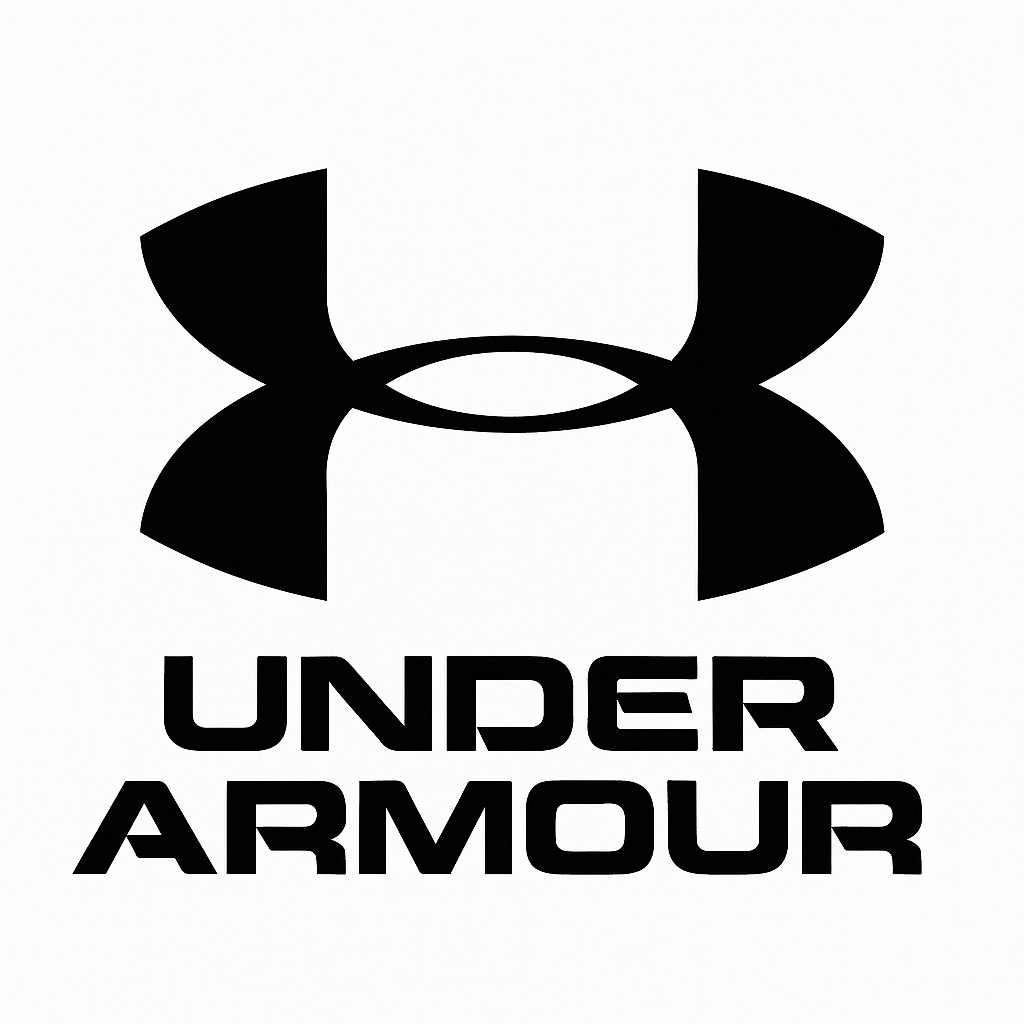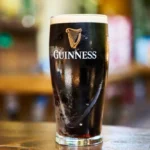
Under Armour logo
When you think of game-changing sportswear brands, Under Armour stands out as a story of grit, innovation, and relentless ambition. From its humble beginnings in a grandmother’s basement to becoming a global powerhouse challenging giants like Nike and Adidas, Under Armour has redefined what performance apparel means. Over the years, the brand has introduced groundbreaking technologies, signed iconic athletes, and navigated both meteoric rises and tough setbacks. Each fact in this list uncovers a fascinating chapter of Under Armour’s journey—whether it’s the creation of HeatGear, the cultural impact of Stephen Curry’s signature shoes, or bold ventures into digital fitness. These 25 trivia points go beyond surface-level details, offering deep insights into the brand’s history, financial milestones, and cultural significance. Whether you’re a sports enthusiast, a business strategist, or simply curious about how a small startup became a global name, this collection will give you a comprehensive look at Under Armour’s evolution and its vision for the future.
1. The Humble Basement Beginning (1996)
Under Armour’s origin story is a classic tale of entrepreneurial grit. Kevin Plank, a 24-year-old former special teams captain for the University of Maryland football team, started the company in his grandmother’s basement in Washington, D.C., with just $20,000 in savings and $40,000 in credit card debt. His frustration with sweat-soaked cotton shirts during practice inspired him to create a moisture-wicking alternative. Plank’s first prototype was a compression shirt made from synthetic fabric that kept athletes dry by pulling sweat away from the body. This innovation was revolutionary in the mid-1990s, when cotton dominated athletic wear. By the end of 1996, Plank had sold $17,000 worth of gear, mostly to former teammates and friends. This modest success laid the foundation for a brand that would later challenge giants like Nike and Adidas. The basement operation symbolized a turning point in sports apparel, proving that performance-driven design could disrupt an industry rooted in tradition.
2. The First Big Break: Jeff George and USA Today
Under Armour’s first major publicity moment came in 1997 when Oakland Raiders quarterback Jeff George was photographed wearing one of Plank’s shirts in USA Today. This single image, showing a professional athlete endorsing the product—even unintentionally—gave Under Armour credibility overnight. At the time, the company was still a fledgling operation with no marketing budget, so this exposure was priceless. Plank leveraged the moment by sending samples to NFL teams, betting that word-of-mouth among elite athletes would drive demand. His gamble paid off: by 1998, Under Armour had secured deals with college teams and was gaining traction in locker rooms nationwide. This early endorsement highlighted the power of organic marketing and positioned Under Armour as a brand for serious athletes. It also marked the beginning of a strategy that would define the company—targeting influencers in sports rather than mass-market advertising.
3. The $1 Million Milestone (1998)
Just two years after its founding, Under Armour hit a major financial milestone: $1 million in revenue in 1998. This achievement was remarkable considering the company’s limited resources and lack of mainstream recognition. The surge in sales was driven by Plank’s relentless hustle—he personally visited college campuses, NFL facilities, and sporting goods stores to pitch his product. Under Armour’s early success was fueled by its ability to solve a real problem for athletes: staying dry and comfortable during intense physical activity. The company’s first product line, HeatGear, became a staple for athletes in warm conditions, while ColdGear followed soon after for cold-weather performance. Crossing the $1 million mark validated Plank’s vision and attracted attention from investors, setting the stage for rapid expansion. It also demonstrated that innovation, combined with aggressive grassroots marketing, could carve out space in a market dominated by billion-dollar brands.
4. The “Protect This House” Campaign (2003)
In 2003, Under Armour launched its iconic “Protect This House” campaign, a marketing masterstroke that cemented the brand’s identity as a symbol of toughness and team pride. The ad featured gritty locker-room scenes and athletes chanting the now-famous phrase, creating an emotional connection with viewers. Unlike Nike’s aspirational messaging or Adidas’s focus on style, Under Armour positioned itself as the brand for warriors—athletes who valued performance and resilience over flash. The campaign resonated deeply with high school and college athletes, driving a surge in sales and brand loyalty. It also marked Under Armour’s transition from a niche performance brand to a mainstream competitor. By 2004, revenue had skyrocketed to $281 million, and the company was preparing for its IPO. “Protect This House” wasn’t just an ad; it was a cultural phenomenon that turned Under Armour into a rallying cry for athletes everywhere.
5. Going Public: The 2005 IPO
Under Armour’s initial public offering (IPO) in November 2005 was a watershed moment in its history. The company debuted on the NASDAQ under the ticker symbol UA, offering 12 million shares at $13 each. The stock surged 47% on its first day, closing at $18.05—a clear sign of investor confidence in the brand’s growth potential. At the time, Under Armour reported annual revenue of $281 million, a staggering increase from just $17,000 in its first year. The IPO not only provided capital for expansion but also elevated Under Armour’s status in the competitive sportswear market. It enabled the company to invest in new product lines, marketing campaigns, and global distribution. Going public was a bold move for a company less than a decade old, but it underscored Plank’s ambition to challenge industry titans like Nike and Adidas. The IPO marked the beginning of Under Armour’s transformation from a scrappy startup into a global powerhouse.
6. HeatGear: The Product That Started It All
HeatGear was Under Armour’s first signature product and remains one of its most iconic innovations. Launched in 1996, HeatGear was designed for athletes training in hot conditions, using a lightweight synthetic fabric that wicked moisture away from the skin. This was a radical departure from the cotton shirts that dominated sports apparel at the time, which absorbed sweat and became heavy during workouts. HeatGear’s success was rooted in its ability to keep athletes cool and dry, enhancing performance and comfort. By 1998, HeatGear accounted for the majority of Under Armour’s sales, and its popularity among college and professional athletes helped the brand gain credibility. The product’s impact extended beyond sports—it influenced the entire athletic wear industry, pushing competitors to adopt moisture-wicking technology. Today, HeatGear remains a cornerstone of Under Armour’s lineup, symbolizing the company’s commitment to performance-driven design.
7. ColdGear and AllSeasonGear: Expanding the Arsenal
After HeatGear’s success, Under Armour introduced ColdGear in 1997 to cater to athletes training in cold environments. ColdGear featured a double-layered fabric that trapped heat while wicking moisture, allowing athletes to stay warm without sacrificing comfort. This innovation was crucial for sports like football, where players often train and compete in harsh winter conditions. Following ColdGear, Under Armour launched AllSeasonGear, designed for moderate climates, completing a trifecta of performance apparel solutions. These product lines demonstrated Under Armour’s strategic approach to addressing athletes’ needs across different environments. By offering specialized gear for every season, the company positioned itself as a comprehensive performance brand rather than a niche player. This diversification also fueled revenue growth, helping Under Armour surpass $100 million in annual sales by 2000—a remarkable feat for a company less than five years old.
8. The Rise of Footwear: A Bold Move in 2006
In 2006, Under Armour made its first foray into footwear, a move that signaled its ambition to compete head-to-head with giants like Nike and Adidas. The company launched a line of football cleats, leveraging its strong presence in the sport to gain traction. This expansion was risky—footwear is a highly competitive segment dominated by established brands with decades of experience. However, Under Armour’s cleats were well-received, praised for their lightweight design and performance features. The success of this initial launch paved the way for future footwear lines, including running shoes and basketball sneakers. By 2010, footwear accounted for a growing share of Under Armour’s revenue, though it remained a challenging category. The move into footwear was more than a product expansion; it was a statement of intent, signaling that Under Armour aimed to be a full-spectrum athletic brand rather than a specialist in apparel.
9. Digital Fitness Acquisitions: Betting on Tech
Under Armour’s acquisition spree in the digital fitness space between 2013 and 2015 marked a significant shift in its strategy. The company purchased MapMyFitness for $150 million in 2013, followed by Endomondo and MyFitnessPal in 2015 for a combined $560 million. These acquisitions positioned Under Armour as a leader in connected fitness, giving it access to millions of users and vast amounts of health data. The goal was to integrate technology with performance apparel, creating a holistic ecosystem for athletes. While the vision was ambitious, execution proved challenging, and Under Armour eventually sold MyFitnessPal in 2020. Nevertheless, these moves reflected the company’s willingness to innovate beyond traditional apparel and footwear. At its peak, Under Armour’s digital fitness community had over 200 million users, underscoring the brand’s influence in shaping the future of athletic performance.
10. Stephen Curry and the Basketball Revolution
Under Armour’s partnership with NBA superstar Stephen Curry in 2013 was a game-changer for the brand. At the time, Curry was an emerging talent, and Nike had passed on renewing his endorsement deal. Under Armour seized the opportunity, signing Curry and launching his signature shoe line in 2015. The Curry One was an instant hit, and subsequent models helped Under Armour gain a foothold in the basketball market—a segment historically dominated by Nike’s Jordan Brand. Curry’s rise to MVP status and his role in the Golden State Warriors’ championship dynasty amplified Under Armour’s visibility. By 2016, basketball accounted for a significant portion of the company’s footwear sales, and Curry became the face of the brand. This partnership demonstrated Under Armour’s ability to capitalize on cultural moments and athlete-driven marketing, reinforcing its image as a challenger brand willing to take bold bets.
11. The Global Expansion Strategy
Under Armour’s journey from a U.S.-centric brand to a global player began in earnest after its IPO in 2005. Initially, the company focused on North America, where it had strong ties to football and collegiate sports. However, by 2010, Under Armour recognized the need to penetrate international markets to sustain growth. The brand targeted Europe and Asia, opening offices in Amsterdam and Hong Kong and investing heavily in localized marketing campaigns. Despite these efforts, global expansion proved challenging due to stiff competition from entrenched giants like Nike and Adidas, which had decades of international dominance. Under Armour’s revenue from international markets grew from just 6% in 2012 to nearly 30% by 2020, reflecting steady progress. However, cultural adaptation and supply chain complexities slowed momentum. This phase of expansion highlighted the difficulties of scaling a performance-driven brand globally while maintaining its core identity.
12. The Connected Fitness Vision
Under Armour’s push into digital fitness was not just about apps—it was about creating an ecosystem that integrated apparel, footwear, and data-driven insights. The company envisioned a future where athletes could track performance metrics through smart shoes and apparel connected to apps like MapMyRun and MyFitnessPal. In 2016, Under Armour even launched the UA Record platform, aiming to centralize health data for users. At its peak, the connected fitness division had over 200 million registered users, making Under Armour a major player in the fitness tech space. However, monetizing this data proved difficult, and the company faced stiff competition from tech giants like Apple and Google. By 2020, Under Armour scaled back its ambitions, selling MyFitnessPal for $345 million. This chapter in Under Armour’s history underscores the risks of venturing outside core competencies, even with a visionary approach.
13. The Rise and Fall of the Curry Brand
Stephen Curry’s partnership with Under Armour was initially a triumph, catapulting the brand into the basketball spotlight. The Curry One, released in 2015, was a commercial success, and Curry’s back-to-back MVP seasons amplified the hype. Under Armour doubled down by launching the Curry Brand in 2020, positioning it as a direct competitor to Nike’s Jordan Brand. The Curry Brand featured performance shoes, apparel, and community initiatives aimed at youth basketball. However, sustaining momentum proved difficult as Under Armour struggled with design missteps and inconsistent marketing. While Curry remained loyal, the brand failed to replicate Jordan’s cultural dominance. Sales of Curry sneakers peaked in 2016 but declined in subsequent years, reflecting the volatility of athlete-driven endorsements. This saga illustrates both the potential and pitfalls of building a sub-brand around a single superstar.
14. The 2016 Peak and Subsequent Decline
Under Armour reached its zenith in 2016, reporting $4.8 billion in revenue and enjoying a reputation as the fastest-growing sportswear brand in America. Its stock price soared, and analysts hailed it as a serious challenger to Nike. However, cracks soon appeared. Overexpansion, inventory mismanagement, and slowing demand led to declining sales by 2017. The company faced intense competition in the athleisure segment, where brands like Lululemon and Adidas thrived. Under Armour’s heavy reliance on performance gear, rather than lifestyle apparel, limited its appeal to casual consumers. By 2020, revenue growth had stalled, and the company underwent restructuring, including leadership changes and cost-cutting measures. This boom-and-bust cycle serves as a cautionary tale about the dangers of rapid scaling without strategic diversification.
15. Kevin Plank’s Leadership and Return
Kevin Plank’s leadership style has been central to Under Armour’s identity. Known for his relentless drive and hands-on approach, Plank guided the company from a basement startup to a multibillion-dollar enterprise. However, his tenure was not without controversy. In 2019, Plank stepped down as CEO amid declining performance and governance concerns, transitioning to an executive chairman role. Under Armour appointed Patrik Frisk as CEO, hoping to stabilize operations. Yet, by 2024, Plank returned as CEO, signaling a renewed focus on innovation and brand authenticity. His comeback reflects both the challenges of succession planning and the enduring influence of founder-led vision. Plank’s story is emblematic of entrepreneurial resilience, illustrating how leadership dynamics can shape a company’s trajectory over decades.
16. The Launch of UA HOVR Technology
In 2018, Under Armour introduced UA HOVR, a proprietary cushioning technology designed to compete with Nike’s Air and Adidas’s Boost. HOVR was engineered to provide a “zero gravity feel,” reducing impact while maintaining energy return for runners. The innovation was paired with smart connectivity—select HOVR shoes featured embedded sensors that synced with the MapMyRun app, allowing athletes to track metrics like cadence and stride length without a wearable device. This move positioned Under Armour at the intersection of performance and technology, reinforcing its commitment to innovation. While HOVR received positive reviews for comfort and durability, it faced stiff competition in a saturated running shoe market. Nevertheless, the launch demonstrated Under Armour’s ability to blend biomechanics with digital integration, appealing to tech-savvy athletes seeking data-driven performance insights.
17. The Curry One and Cultural Impact
The release of the Curry One in 2015 was more than a product launch—it was a cultural moment. Stephen Curry’s meteoric rise coincided with the debut of his signature shoe, creating a perfect storm of hype. The Curry One featured Charged Cushioning technology and a sleek design tailored to Curry’s playing style. Its success was amplified by Curry’s MVP season and the Golden State Warriors’ championship run, making the shoe a symbol of excellence and underdog triumph. Unlike Nike’s flashy designs, the Curry One emphasized functionality and authenticity, resonating with fans who admired Curry’s humility and work ethic. The shoe’s popularity extended beyond basketball courts, influencing sneaker culture and driving Under Armour’s market share in performance footwear. This moment marked Under Armour’s peak cultural relevance, proving that athlete partnerships could redefine brand identity.
18. The 2017 Restructuring and Layoffs
By 2017, Under Armour faced mounting challenges—slowing sales, rising competition, and overreliance on North American markets. In response, the company announced a major restructuring plan, including layoffs affecting approximately 280 employees. The goal was to streamline operations, reduce costs, and refocus on core performance products. This period also saw leadership changes, with Kevin Plank stepping back from day-to-day management and Patrik Frisk assuming the CEO role in 2020. The restructuring underscored the volatility of the athletic apparel industry, where rapid growth can quickly give way to contraction. For Under Armour, the layoffs were a painful but necessary step to stabilize finances and reposition the brand for long-term sustainability. It also highlighted the risks of aggressive expansion without adequate diversification into lifestyle segments.
19. The Rise of Athleisure and Missed Opportunities
The mid-2010s witnessed the explosive growth of athleisure—a trend blending athletic wear with everyday fashion. Brands like Lululemon and Adidas capitalized on this movement, offering stylish, versatile apparel that appealed to both athletes and casual consumers. Under Armour, however, struggled to adapt. Its identity as a hardcore performance brand limited its appeal in the lifestyle segment, where aesthetics often trumped functionality. While the company introduced lines like UA Sportstyle, they failed to gain traction compared to competitors’ offerings. This misstep cost Under Armour valuable market share during a period when athleisure was driving industry growth. The lesson was clear: innovation in performance gear must be balanced with cultural relevance and fashion-forward design to thrive in a dynamic market.
20. The Pandemic’s Impact on Under Armour
The COVID-19 pandemic in 2020 dealt a severe blow to Under Armour, disrupting supply chains, shuttering retail stores, and dampening consumer demand. The company reported a 23% decline in revenue in the second quarter of 2020, prompting aggressive cost-cutting measures and a renewed focus on e-commerce. While digital sales grew, they could not fully offset losses from brick-and-mortar closures. The pandemic also accelerated shifts in consumer behavior, with increased demand for home fitness and casual wear—areas where Under Armour lagged behind competitors. Despite these challenges, the crisis forced the company to prioritize digital transformation and operational efficiency, laying the groundwork for recovery. This period highlighted the importance of agility in navigating global disruptions and adapting to evolving market dynamics.
21. The Launch of UA Rush and Mineral-Infused Apparel
In 2019, Under Armour introduced UA Rush, a groundbreaking apparel line infused with minerals designed to recycle the body’s energy during workouts. The concept was based on infrared technology: the minerals embedded in the fabric absorbed heat emitted by the body and reflected it back as infrared energy, theoretically improving endurance and recovery. This innovation positioned Under Armour as a pioneer in performance science, blending athletic wear with physiological enhancement. While the claims sparked debate among skeptics, UA Rush gained traction among elite athletes and fitness enthusiasts seeking every possible edge. The launch reflected Under Armour’s commitment to pushing boundaries in sports technology, even as competitors focused more on lifestyle and fashion trends. UA Rush exemplified the brand’s identity as a performance-first company, reinforcing its appeal to serious athletes rather than casual consumers.
22. The 2020 Exit from Major Sponsorship Deals
Under Armour’s aggressive sponsorship strategy in the 2010s included deals with universities, professional teams, and individual athletes. However, by 2020, financial pressures and strategic realignment forced the company to scale back. One of the most notable moves was ending its $280 million, 15-year contract with UCLA after just three years, citing “marketing benefits not being delivered.” This decision underscored the risks of high-cost sponsorships in an era of shifting consumer behavior and declining brand momentum. While these deals initially boosted visibility, they strained Under Armour’s finances during a period of declining sales. The pullback marked a turning point, signaling a shift from aggressive expansion to operational discipline. It also highlighted the evolving economics of sports marketing, where ROI is increasingly scrutinized amid changing media landscapes.
23. The Rise of Direct-to-Consumer Sales
The pandemic accelerated Under Armour’s pivot toward direct-to-consumer (DTC) channels, a strategy that reshaped its business model. Historically reliant on wholesale partnerships with retailers like Dick’s Sporting Goods, Under Armour invested heavily in e-commerce and brand-owned stores starting in 2020. By 2023, DTC accounted for nearly 40% of total revenue, up from 30% pre-pandemic. This shift allowed Under Armour to control pricing, improve margins, and strengthen customer relationships through personalized experiences. The move mirrored industry trends, as brands sought to reduce dependence on third-party retailers and leverage digital platforms for growth. For Under Armour, DTC was not just a sales channel—it was a lifeline during a period of retail disruption and a foundation for future competitiveness in a digital-first marketplace.
24. Sustainability Initiatives and Green Goals
In recent years, Under Armour has embraced sustainability as a core strategic priority, responding to growing consumer demand for eco-friendly products. The company launched initiatives to reduce carbon emissions, improve supply chain transparency, and incorporate recycled materials into its apparel and footwear. By 2025, Under Armour aimed to source 100% of its polyester from recycled content and achieve significant reductions in water usage during manufacturing. These efforts reflect a broader industry shift toward environmental responsibility, driven by both regulatory pressures and consumer expectations. While sustainability poses operational challenges, it also offers opportunities for differentiation in a crowded market. For Under Armour, green initiatives are not just about compliance—they are about aligning performance innovation with ethical stewardship, reinforcing the brand’s relevance in a socially conscious era.
25. Kevin Plank’s Vision for the Future
As of 2024, Kevin Plank’s return as CEO signaled a renewed focus on innovation and brand authenticity. Plank emphasized a “back-to-basics” approach, prioritizing performance gear over lifestyle distractions and doubling down on digital integration. His vision includes leveraging data analytics to personalize athlete experiences, expanding global reach through localized strategies, and investing in cutting-edge materials science. Plank also highlighted sustainability and inclusivity as pillars of Under Armour’s future, aiming to balance technological advancement with social responsibility. This forward-looking strategy reflects lessons learned from past missteps—overexpansion, missed athleisure trends, and underestimating digital disruption. For Under Armour, the next decade will be defined by its ability to reclaim leadership in performance innovation while adapting to a rapidly evolving consumer landscape. Plank’s comeback underscores the enduring power of founder-led vision in shaping corporate destiny.
Frequently Asked Questions About Under Armour
1. What makes Under Armour different from other sports brands?
Under Armour stands out for its focus on performance-driven innovation. Unlike many competitors that emphasize lifestyle and fashion, Under Armour’s core mission is to enhance athletic performance through advanced technology. Its signature products—HeatGear, ColdGear, and AllSeasonGear—use moisture-wicking fabrics that regulate body temperature, keeping athletes cool, dry, or warm depending on conditions. The brand also invests heavily in material science, introducing innovations like UA Rush (mineral-infused apparel) and UA HOVR (energy-return cushioning). This commitment to functionality and science-based design has positioned Under Armour as a leader in performance apparel rather than just a fashion-forward brand. [dandan10.com]
2. What types of products does Under Armour sell?
Under Armour offers a wide range of products, including:
- Apparel: Shirts, shorts, leggings, jackets, and compression gear for men, women, and youth.
- Footwear: Running shoes, basketball sneakers, training shoes, and cleats.
- Accessories: Bags, hats, gloves, socks, and sports masks.
- Connected Fitness: Smart shoes and apps like MapMyRun for tracking performance. The brand caters to multiple sports—running, basketball, football, golf, and even hunting—making it a versatile choice for athletes and fitness enthusiasts. [dandan10.com]
3. How do I choose the right size for Under Armour clothing and shoes?
Under Armour provides detailed size charts on its website for apparel and footwear. To ensure the best fit:
- Measure your chest, waist, hips, and inseam for clothing.
- For shoes, measure your foot length and compare it to UA’s sizing guide. UA also offers fit descriptions (compression, fitted, loose) so you can select based on comfort and performance needs. Always check product-specific sizing notes, as fit may vary by style. [help.underarmour.com]
4. What is the difference between HeatGear and ColdGear?
HeatGear and ColdGear are Under Armour’s signature technologies:
- HeatGear: Designed for hot weather (20°C and above). It wicks sweat and keeps athletes cool and dry.
- ColdGear: Built for cold conditions (13°C and below). It traps heat while maintaining breathability, ensuring warmth without bulk. Both lines aim to regulate body temperature and optimize comfort during workouts. [dandan10.com]
5. How do I care for my Under Armour products?
To maintain performance and longevity:
- Wash in cold water with mild detergent.
- Avoid bleach and fabric softeners (they damage moisture-wicking properties).
- Air dry or tumble dry on low heat. For specialty items like UA SportsMask, follow specific care instructions provided on the product label. [help.underarmour.com]
6. Does Under Armour offer free shipping?
Yes, Under Armour frequently offers free standard shipping on orders over a certain amount (usually $50 or more), though this varies by region and promotional periods. Check UA.com for current shipping policies and offers. [dandan10.com]
7. What is Under Armour’s return policy?
Under Armour generally allows returns within 60 days of purchase for unworn items with tags attached. Returns are often free in many regions. Exceptions include:
- Masks and gaiters (final sale for health reasons).
- Customized products. Returns can be initiated online or at UA Brand House and Factory House stores. [help.underarmour.com]
8. Does Under Armour make eco-friendly products?
Yes, Under Armour has committed to sustainability initiatives, including:
- Using recycled polyester in apparel.
- Reducing water usage in manufacturing.
- Setting goals for carbon emission reductions. These efforts align with industry trends toward environmentally responsible production. [dandan10.com]
9. What is UA Rewards and how does it work?
UA Rewards is Under Armour’s loyalty program. Members earn 5 points per $1 spent on UA.com and in-store purchases. Points can be redeemed for:
- Exclusive gear.
- Athlete experiences.
- Early access to product launches. Membership is free for U.S. residents aged 16 and older. [help.underarmour.com]
10. How do I track my Under Armour order?
You can track your order by logging into your UA account and visiting the Order History section. Once shipped, you’ll receive an email with tracking details. UA also offers real-time updates via its Help Center and customer service chat. [help.underarmour.com]
11. Does Under Armour ship internationally?
Yes, Under Armour offers international shopping through localized websites. Customers can select their region from the dropdown menu on UA.com to view available products and shipping options. [help.underarmour.com]
12. What payment methods does Under Armour accept?
Under Armour accepts major credit and debit cards, PayPal, and Klarna (for installment payments). Klarna allows customers to split payments into four interest-free installments. [help.underarmour.com]
13. Are Under Armour headphones waterproof?
UA JBL Wireless Headphones are IPX5 certified, meaning they are water- and sweat-resistant but not fully waterproof. They can withstand rain and sweat but should not be submerged in water. [help.underarmour.com]
14. Can I return a UA SportsMask?
No, UA SportsMasks and gaiters are final sale due to health and safety concerns. This policy helps prevent contamination risks. [help.underarmour.com]
15. How do I contact Under Armour customer service?
You can reach Under Armour via:
- Phone: 1-888-727-6687 (U.S.)
- Text: 833-550-3938
- Live Chat: Available on UA.com Support hours: Monday–Sunday, 8 a.m.–Midnight EST. [help.underarmour.com]









